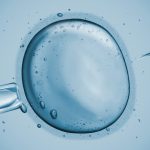Egg Freezing
High Pregnancy Rates with Both Fresh and Frozen Embryos

In the last few years our ability to grow embryos for 5 days, at which point they are called blastocysts, has led to extremely high pregnancy rates with both fresh and frozen embryos.
Many of the top IVF centers in the country, including ours, have changed to transferring only blastocyst stage embryos (Day 5 embryos). This has led to pregnancy rates around 50% after the transfer of a single blastocyst.
At this stage, the embryos have begun to differentiate into fetal tissue and placental tissue and we’re able to tell the embryos which have the highest chance of implantation and are worth freezing. This single embryo transfer rate has led to a much lower chance of twin and triplet pregnancies. This is extremely beneficial as twin and certainly triplet pregnancies are very high risk pregnancies; premature delivery and all the problems for the babies associated with this are 4-10x higher than a singleton pregnancy.
Our ability to grow embryos to blastocysts and transfer a single blastocyst has also led to a higher chance of freezing additional perfect embryos. These high-quality embryos have a 95% rate of surviving the freezing and thawing process. With these high-quality thawed embryos our success rate remains above 50%. In fact in recent months our embryo transfer rates with frozen embryos has been equal to or slightly higher than with fresh embryos. This may be due to the fact that on frozen transfers patients have normal hormonal levels unlike a stimulated cycle with unusually high hormonal levels. Many patients are surprised that the frozen embryo transfer rates are equal to or higher than fresh embryo transfers.
Overall success rates with transferring a single embryo on two cycles is much higher than transferring two embryos on a single cycle. Single embryo transfer has led to a significant decline in twin and triplet pregnancies; this is in accordance with the recent ASRM guidelines to attempt to decrease twins and nearly eliminate triplet pregnancy rates.
Have more questions on which path is best for you? Contact us, we are here to help you choose the best path for your treatment.


